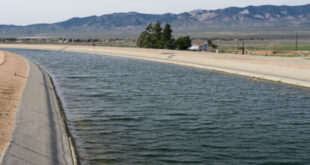Following a staff presentation on the updated Nearshore Plan at its March meeting, the Lahontan Regional Water Quality Control Board (LRWQCB) has accepted an updated plan to guide ongoing efforts to monitor, protect and improve nearshore conditions of Lake Tahoe. The nearshore is the part of Lake Tahoe that residents and visitors interact with most. It extends from the shoreline out 350 feet into the lake, or to a depth of 69 feet, whichever is further.
“We are taking a proactive approach to understanding Lake Tahoe’s complex nearshore environment,” said Pete Pumphrey, Lahontan Water Board chairman. “The key recommendations in this Plan will turn research findings into actions that improve water quality.”
Nearshore algal growth is of particular public and agency concern. The Lahontan Water Board continues to invest in targeted research and monitoring to learn about what drives algae conditions at Lake Tahoe. Algae is a simple, nonflowering, and typically aquatic plant of a large group that includes the seaweeds and many single-celled forms. Algae contain chlorophyll but lack true stems, roots, leaves, and vascular tissue.
Algae blooms can occur when an excess of nutrients (particularly phosphorus and nitrogen) occur in waters and higher concentrations of these nutrients in water cause increased growth of algae and green plants. Harmful algal blooms, or HABs, occur when colonies of algae — simple photosynthetic organisms — grow out of control while producing toxic or harmful effects on people, fish, shellfish, marine mammals, and birds. The human illnesses caused by HABs, though rare, can be debilitating or even fatal. HABs have been reported in every U.S. coastal state, and their occurrence may be increasing. HABs are a national concern because they affect not only the health of people and marine ecosystems, but also the ‘health’ of local and regional economies.
The LRWQCB’s updated plan summarizes research to date and outlines future projects to further evaluate climate impacts, groundwater nutrient sources, and changes in the lake’s biology that can influence when and where algae grows. The Lahontan Water Board has also funded a comprehensive bacteria-monitoring project to ensure Lake Tahoe’s beaches are safe for public use and has invested in the first lake-wide aquatic plant survey.
The LRWQCB has been working with agency and academic partners to better understand nearshore processes, track conditions, and evaluate whether management actions should be taken to address specific water quality issues. The Water Board’s efforts are organized around its recently updated Nearshore Water Quality Protection Plan available at: https://www.waterboards.ca.gov/lahontan/board_info/agenda/2019/mar/20190313_item_6.pdf. The Lake Tahoe nearshore program is a bi-state effort between California and Nevada.
 California Water News Daily Your Source For Water News in California
California Water News Daily Your Source For Water News in California


